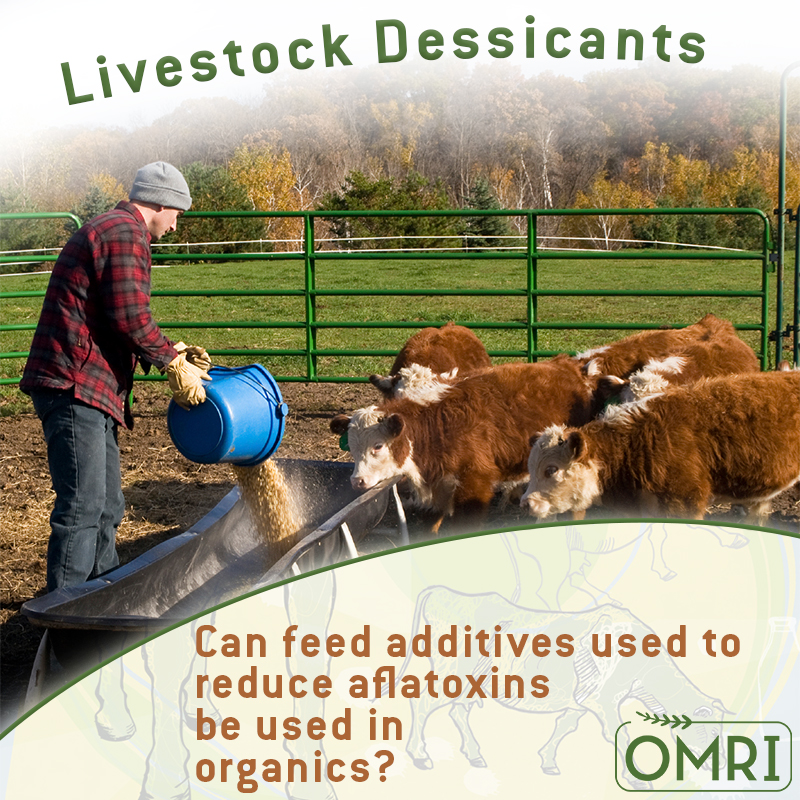Livestock Dessicants
 Can hydrated sodium calcium aluminosilicate or silicon dioxide be used as a treatment to reduce aflatoxins in feed?
Can hydrated sodium calcium aluminosilicate or silicon dioxide be used as a treatment to reduce aflatoxins in feed?
By Brian Baker
If the material is nonsynthetic, then yes. Otherwise, no.
The use of mycotoxin binders or adsorbants in feed can reduce toxic substances produced by Aspergillus spp. and related fungi harmful to livestock. Hydrated sodium calcium aluminosilicate binds aflatoxin (through adsorption and chelation), rendering it biologically unavailable. Adsorbants and natural dessicants (drying agents) are permitted to improve feed as long as they do not appear on the National List of prohibited nonsynthetic substances.
Hydrated calcium sodium aluminosilicate and diatomaceous earth (DE) are used as feed additives for these purposes. In many cases, minerals can be synthetic or nonsynthetic. Montmorillonite is a nonsynthetic form of hydrated calcium sodium aluminosilicate, but some other forms are synthetic. Calcium (alkali) aluminosilicate hydrate is a closely related synthetic form found in materials like concrete. DE is composed of silicon dioxide, as is sand, and is typically nonsynthetic, even when calcined. Manufacturing processes still need to be reviewed for minerals like DE, because processing steps and additives could potentially be used that render the material synthetic (see NOP 5033-1: Decision Tree for Classification of Materials as Synthetic or Nonsynthetic).
OMRI only reviews input material compliance to national organic standards. Other regulators, such as state agricultural agencies, may further restrict materials beyond the organic standards.
This article originally appeared in the spring 2009 issue of the OMRI Materials Review newsletter, and was reviewed and updated in November 2021 by Senior Technical Coordinator Peter Bungum.








